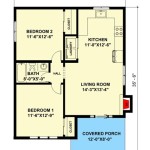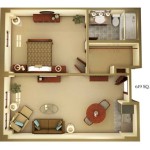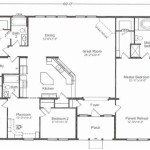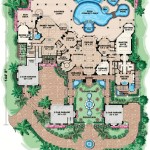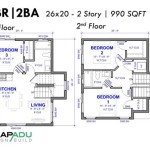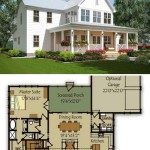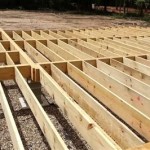House Plans For A Lake House: Designing Your Lakeside Retreat
Designing a lake house requires careful consideration of several factors that go beyond traditional home planning. The unique environment, potential views, and the desire to maximize enjoyment of the lakefront property demand a thoughtful approach. House plans for a lake house should prioritize functionality, aesthetics that complement the natural surroundings, and sustainability to protect the delicate ecosystem. This article will explore key aspects to consider when selecting or creating house plans for a lake house, ensuring a comfortable and enduring lakeside living experience.
Understanding the Specific Site Conditions
The first and arguably most crucial step in planning a lake house is a thorough assessment of the property itself. Lakefront properties often present unique challenges and opportunities that require specific architectural solutions. Soil composition, topography, prevailing winds, sun exposure, and water levels are all critical factors that will influence the design and construction process.
Soil composition impacts the foundation design. Sandy soil may require deeper foundations than clay soil, and the presence of bedrock can significantly simplify the process. Topography dictates the placement and orientation of the house. Building on a slope can provide stunning views but may necessitate terracing or retaining walls. Conversely, a flat lot offers ease of construction but may require creative landscaping to maximize visual appeal.
Prevailing winds should be considered when planning the orientation of the house and the placement of windows and outdoor living spaces. Designing the house to take advantage of natural ventilation can reduce reliance on air conditioning, contributing to energy efficiency. Sun exposure influences the heating and cooling needs of the house. Large, south-facing windows can provide ample natural light and solar heat gain in the winter, while strategically placed overhangs and landscaping can provide shade in the summer.
Water levels are perhaps the most critical consideration on a lakefront property. It is imperative to determine the high-water mark and design the house to be safely above this level. Local regulations often dictate setback requirements from the shoreline, which must be strictly adhered to. Failure to account for these factors can lead to structural damage, flooding, and legal complications.
Beyond these physical characteristics, it is also important to consider the aesthetic character of the surrounding area. The house should be designed to blend harmoniously with the natural environment and complement the existing architecture of neighboring properties. This may involve using natural materials, incorporating local design elements, and maintaining a low profile to minimize visual impact on the landscape.
Prioritizing Functionality and Flow for Lakeside Living
Lake houses are often used as recreational retreats, requiring a different approach to interior layout and functionality than a primary residence. The primary goal should be to create a space that is conducive to relaxation, entertainment, and enjoyment of the lake. This typically involves prioritizing open floor plans, maximizing natural light, and incorporating ample outdoor living spaces.
Open floor plans allow for seamless transitions between living, dining, and kitchen areas, creating a social and inviting atmosphere. This layout is particularly well-suited for entertaining guests and allows for unobstructed views of the lake. Large windows and sliding glass doors blur the lines between indoor and outdoor spaces, further enhancing the connection to the natural environment.
Outdoor living spaces are an essential component of any lake house. Decks, patios, and screened porches provide comfortable areas for dining, lounging, and enjoying the fresh air. Consider incorporating features such as outdoor kitchens, fireplaces, and hot tubs to enhance the outdoor experience. Direct access to the lake is also crucial. A private dock, boat ramp, or swimming platform can significantly enhance the enjoyment of the property.
The interior layout should also be designed to accommodate the specific needs of the occupants. Consider incorporating features such as a mudroom for storing wet gear, a laundry room for washing towels and swimsuits, and ample storage space for water sports equipment. Guest bedrooms and bathrooms should be strategically located to provide privacy and comfort for visitors. A well-designed kitchen is essential for preparing meals and entertaining. Consider incorporating features such as a large island, ample counter space, and high-quality appliances.
The flow of the house should be carefully considered to ensure that it is both functional and aesthetically pleasing. Circulation paths should be clear and direct, avoiding unnecessary hallways and bottlenecks. The layout should be intuitive and easy to navigate, even for first-time visitors. Consider the viewshed from different areas of the house and orient the layout to maximize the enjoyment of the lake.
Selecting Materials and Finishes that Withstand the Elements
Lake houses are exposed to harsh environmental conditions, including moisture, strong winds, and intense sunlight. Therefore, it is crucial to select materials and finishes that are durable, weather-resistant, and low-maintenance. The choice of materials will impact not only the longevity of the house but also its aesthetic appeal and environmental impact. Natural materials, such as wood and stone, are often a popular choice for lake houses, as they blend harmoniously with the natural surroundings.
For exterior cladding, consider materials such as cedar siding, stone veneer, or fiber cement siding. Cedar siding is naturally resistant to decay and insects and provides a warm, inviting aesthetic. Stone veneer is durable and requires minimal maintenance. Fiber cement siding is a cost-effective option that is resistant to fire, insects, and moisture. Roofing materials should be chosen for their durability and weather resistance. Asphalt shingles are a common choice, but metal roofing offers superior longevity and energy efficiency. Consider using light-colored roofing materials to reflect sunlight and reduce heat gain.
Windows and doors should be selected for their energy efficiency and weather resistance. Double-pane or triple-pane windows with low-E coatings can significantly reduce heat loss and gain, lowering energy bills. Choose windows and doors with durable frames, such as vinyl or fiberglass, that are resistant to rot and warping. Sealants and weather stripping should be applied properly to prevent air and water infiltration.
Interior finishes should also be selected for their durability and ease of maintenance. Hardwood flooring is a classic choice that is durable and attractive. Tile flooring is a good option for bathrooms and kitchens, as it is water-resistant and easy to clean. Consider using moisture-resistant drywall in areas that are prone to dampness. Paints and stains should be selected for their durability and resistance to fading. Choose low-VOC (volatile organic compound) paints and stains to minimize indoor air pollution.
Outdoor living spaces should be furnished with weather-resistant furniture and materials. Teak furniture is a popular choice for outdoor furniture, as it is naturally resistant to decay and insects. Consider using composite decking materials, which are durable, low-maintenance, and resistant to rot and insects. Outdoor fabrics should be selected for their resistance to fading and mildew.
Integrating Sustainable Design Principles
Designing a sustainable lake house is not only environmentally responsible but also economically advantageous in the long run. Sustainable design principles can reduce energy consumption, minimize environmental impact, and create a healthier living environment. This involves considering factors such as energy efficiency, water conservation, and material selection.
Energy efficiency can be improved through a variety of strategies. Proper insulation is essential for reducing heat loss and gain, lowering energy bills. Install high-performance windows and doors to minimize air leakage. Consider using energy-efficient appliances and lighting fixtures. Solar panels can be installed to generate electricity, reducing reliance on the grid. Geothermal heating and cooling systems can also be used to reduce energy consumption.
Water conservation can be achieved through the use of low-flow fixtures, such as toilets, showers, and faucets. Consider installing a rainwater harvesting system to collect rainwater for irrigation purposes. Xeriscaping, which involves using drought-tolerant plants, can reduce the need for irrigation. Greywater recycling systems can be used to reuse wastewater from sinks and showers for irrigation or toilet flushing.
Material selection plays a significant role in sustainable design. Choose materials that are locally sourced, recycled, or renewable. Use wood that is certified by the Forest Stewardship Council (FSC) to ensure that it is harvested sustainably. Consider using materials with low embodied energy, which refers to the energy required to extract, process, and transport the material. Minimize waste during construction by carefully planning material orders and recycling construction debris.
Beyond these specific strategies, it is important to consider the overall environmental impact of the house. Minimize disturbance to the natural landscape during construction. Preserve existing trees and vegetation whenever possible. Avoid using chemicals that can pollute the lake. Implement erosion control measures to prevent soil erosion. Design the house to minimize light pollution, which can disrupt the natural ecosystem.
Integrating these sustainable design principles into the house plan can create a lake house that is both beautiful and environmentally responsible. This will not only benefit the occupants but also contribute to the long-term health of the lake ecosystem. A well-designed and sustainably built lake house can be a source of enjoyment for generations to come.

Lake House Plans Floor Lakefront The Designers

Affordable And View Worthy Lake Homes Dfd House Plans Blog

3 Bedroom Lake Cabin Floor Plan Max Fulbright Designs

Lake House Plans Blog Homeplans Com

Best Lake House Plans Waterfront Cottage Simple Designs

Lake House Plans Specializing In Home Floor

Best Lake House Plans Waterfront Cottage Simple Designs

1 Story Craftsman Style Lake House Plan With Wrap Around Deck Pelican Bay Plans Small Houses

Lake House Plans Floor Lakefront The Designers

Lake House Plans Blog Homeplans Com

